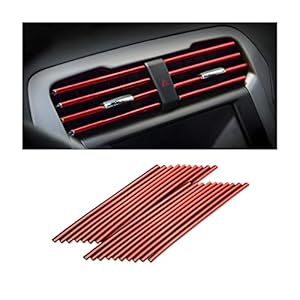MINI’s John Cooper Works, or JCW, division is tasked with some of the enjoyable missions on the planet. They take run-of-the-mill MINI vehicles and SUVs — that are already fairly pleasurable proper out of the field — and switch them into extra targeted variations of themselves. The subsequent era of MINI is upon us, and meaning a brand new spherical of JCW merchandise, too. However what precisely goes into turning a MINI right into a JCW? Maybe extra importantly, how does electrification issue into the enjoyable components? We sit down with Patrick Häussler, the MINI engineer accountable for the J01 JCW Electrical and J05 Aceman JCW, to study extra.
Beginning From the Floor Up
“The very very first thing is at all times the springs,” Patrick begins after we ask the place the engineers start in terms of JCW-ing a MINI. After the springs come the dampers, however that’s not all that will get tinkered with. New anti-roll bars, stabilizers, bump stops are added, and extra camber will get dialed in. After locking within the “{hardware},” as Patrick calls it, MINI turns its consideration to the steering. “When you have very heavy steering, a automotive would possibly really feel numb,” Patrick says. “Too gentle, and it’d really feel a bit bit nervous.” The thought is to seek out the right medium. One other issue MINI appears to be like at is at-speed steering; clearly, round city, you don’t need heavy steering. However at freeway speeds, you need one thing with some heft to keep away from twitchiness. Steering is likely one of the most crucial elements to how a automotive feels, in line with Patrick. We agree.
Right here’s the place the {hardware} begins to vary. The gasoline-powered F66 MINI Cooper JCW options frequency-selective dampers (FSD). These mechanical dampers alter themselves primarily based on highway inputs—softening for smaller, fast bumps and firming up for bigger impacts. It’s not a totally adaptive digital system, however Patrick says it provides the automotive an impressively versatile journey, mixing consolation with sharp physique management. MINI engineers additionally dialed in additional camber on the entrance axle, serving to to maximise grip in corners.
The J01 MINI Cooper JCW Electric, alternatively, makes use of a less complicated sport suspension setup with out the frequency-selective tech. Patrick tells us they tried a extra superior system early in growth, however they weren’t pleased with the way it felt on the heavier electrical platform. So as an alternative, they went with a standard mechanical sport suspension, balancing consolation and efficiency the old school means—with cautious tuning of spring and damper charges.
Then there’s the Aceman JCW, which stunned us essentially the most. With its longer wheelbase, wider observe, and 40mm larger middle of gravity, it’s an even bigger automotive than both Cooper. MINI initially thought they may carry over a lot of the J01’s setup to the Aceman, however Patrick says that didn’t work in any respect. That they had to return to the drafting board, retuning the springs, dampers, stabilizers, bump stops, and steering to make it really feel worthy of the JCW badge. Apparently, the steering on the Aceman was made deliberately lighter than the Cooper JCW. Why? He explains that including an excessive amount of steering weight to an even bigger, heavier automotive could make it really feel gradual and sluggish. Lightening it up helps protect the MINI’s signature agile really feel—particularly round city.
Get a Grip: Traction Issues
The electrified J01 MINI Cooper JCW brings a maybe understated problem with it: tires. “Because it’s an electrical car… a sports activities tire isn’t at all times the very best in terms of rolling resistance,” Patrick explains. Rolling resistance impacts EV vary. MINI wanted to suit a tire that balanced sportiness with effectivity, and Patrick thinks they “did fairly good.”
After all, with all that electrical torque on faucet, traction administration turns into much more essential. “For this one, we actually labored on yaw momentum enhancement,” Patrick says. This method makes use of refined braking inputs to scale back understeer and even encourage oversteer, making the automotive extra playful and adjustable—form of like BMW M’s MDM mode. It provides you simply sufficient freedom to have enjoyable, whereas nonetheless providing a security internet for those who get in over your head.
Talking of overconfidence, Patrick remembers testing the JCW with DSC totally off. “I turned in, obtained sideways, and it was cool. However you can’t try this for a buyer,” he says. MINI tunes the DTC (Dynamic Traction Management) mode to offer a steadiness between freedom and stability—what Patrick calls a “parachute within the background” to assist save drivers when issues get sketchy.
Torque steer—one thing you typically really feel in highly effective front-wheel-drive vehicles—is one other issue MINI needed to handle. Patrick truly embraces a bit little bit of torque steer, because it provides drivers extra suggestions when pushing the automotive to its limits. “We wish to have as a lot suggestions as potential—particularly for the Cooper—with out it pulling you someplace out of the nook,” he explains. The workforce rigorously tuned torque steer compensation so the automotive feels alive however by no means unwieldy.
Three Totally different Automobiles, Three Personalities
Whereas we loved our time with all three JCW merchandise, every had distinct character traits that made each pleasurable otherwise. That’s not by chance. Extra on that within the full evaluations arising. In the long run, Patrick and his workforce labored onerous to ensure each JCW product nonetheless feels agile and enjoyable.
Try the video for extra insights and tell us which one you’d decide. Gasoline? Electrical? Or the do-it-all Aceman? We’d love to listen to your ideas.
Trending Merchandise

Hiseanllo Car Seat Gap Filler 2 Pack, Univers...

Mandark 4PCS Car Cup Holder Coasters, 2.75 In...















